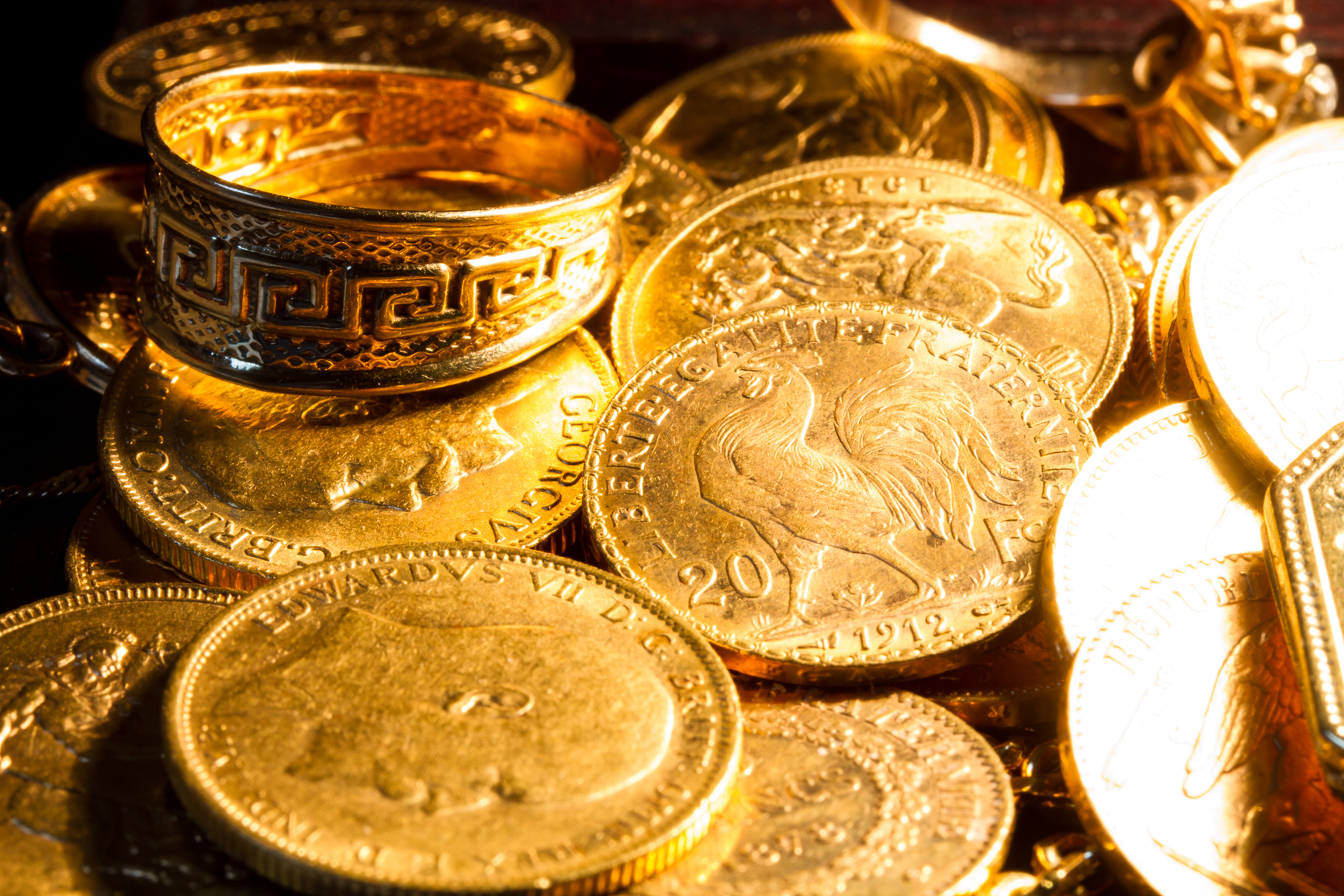“This is gold … all my life I’ve been in love with its color, its brilliance, its divine heaviness” – Auric Goldfinger, from the James Bond film, “Goldfinger”.
Throughout history, gold has been highly valued for jewelry, coinage, and the arts. It’s also widely viewed as a unique store of value as well as a symbol of power and wealth. However, within financial markets, gold may be the most misunderstood asset in the world. To paraphrase famed investor Jeremy Grantham, it’s fair to say that gold is a “faith-based” metal.
Because gold is somewhat complex in terms of what drives its value, I’ll share some insight and perspective on this precious metal to better understand its role globally and in today’s financial markets. To start, let’s examine a more traditional and fundamental role that gold has held around the world.
~ Gold 101 ~
To provide some insight into the role of gold as a store of value, let’s consider an illustration:
You live and work in Vietnam and get paid in dong, the local currency. You’re in a good financial position, save more than you spend, and deposit some of your surplus savings in a local bank – no different than what you would do in the U.S. Here’s the problem: every day you hold dong, the exchange rate depreciates while prices for your everyday goods go up. To combat the effect of a depreciating currency and price inflation, you seek out the U.S. dollar or gold as an alternative currency for your hard-earned dong. You find holding U.S. dollars provides little relief as the dollar has been in a long-term downtrend since 19851, and that gold has historically been a safe haven. Because it’s universally recognized, highly liquid, and represents a universal currency with a daily worldwide market price, exchanging your dong for gold is a viable and natural alternative to U.S. dollars. Therefore, gold itself will likely remain a store of value as long as there are countries with weakening currencies and/or spiraling inflation.
~ The Price of Gold ~
Now, the million dollar question is: how much are you willing to pay for gold? Because it pays no interest or dividends, cannot be consumed and enjoyed like a bottle of fine wine, and has no other like-kind alternative, it’s difficult to assign a quantifiable value to gold, as you would a bond. With that, you’re left with an asset whose value is influenced by:
- Real (inflation-adjusted) interest rates.2
- Price movements of other commodities.
- Central Bank policies, such as money printing or quantitative easing.
- Fluctuations in the U.S. Dollar.
- Inflation and inflation expectations.
- Momentum: gold investors are momentum investors, as the price goes up they buy more.3
~ Investor Demand via the Gold ETF “GLD” ~
Moreover, technical factors, such as temporary imbalances in physical gold demand induced by money flows in and out of the highly-influential gold exchange-traded fund (GLD), affect the price of gold. For example, when GLD spikes in price and diverges from the spot price of gold, GLD, in turn, purchases physical gold for its vaults, thereby increasing demand for the tangible metal.
Recognize that in November 2004, gold exposure was made available to any investor or trader through GLD. Prior to that, the only way to gain exposure to gold was by purchasing a futures contract, buying jewelry, or holding the actual physical commodity by buying a gold bar or coin. GLD not only broadens the number and type of participants, but introduces more leverage to the metal,4 and therefore magnifies the fluctuations in the market price of physical gold.
~ Physical vs. Paper Gold ~
Unless your interest in gold is strictly for trading purposes, physical gold, such as gold coins, provide an alternative to ‘paper’ gold, such as GLD. In the latter case, the average individual investor is unlikely to exchange shares in GLD for the actual physical metal. So in essence, the investor owns paper gold.5 The benefits to holding GLD include a cost-efficient way to gain exposure (and a reliable proxy for the price) of the metal without having to incur storage costs, along with daily liquidity. Alternatively, gold coins or bars provide a medium of exchange in most places around the globe, and because of this unique feature, the metal is widely viewed as a safe haven asset.
~ Gold as Portfolio Diversifier ~
The inclusion of gold into a 60/40 (stock/bond) portfolio provides enhanced diversification benefits because the metal is mostly uncorrelated to stocks and holds a modestly positive relationship to U.S. aggregate bonds.6 For example, a four percent allocation to gold within a 60/40 (stock/bond) portfolio has historically helped reduce portfolio volatility while enhancing risk-adjusted returns.7
Gold is a unique and natural alterative to currencies in distress, and acts as a wealth-preserving asset. Additionally, the metal represents a widely recognized medium of exchange globally while providing added diversification benefits to a traditional stock/bond portfolio. However, because the value assigned to gold is both subjective and can be influenced by a wide variety of factors including non-traditional gold buyers, such as leveraged short-term traders, investors must be prepared to hold an asset whose short-run movements in price will often be impacted by emotion.
Footnotes:
- The U.S. Dollar Index peaked at near 120 in 2002 and is currently at 95.
- To paraphrase Nicholas Johnson: Gold prices are influenced by real yields – when real yields rise, gold prices should fall, when real yields fall, we expect the price of gold to rise. Source: Pimco, Demystifying Gold Prices, January 2014
- Campbell R Harvey – The Truth about Gold. CFA Institute, March 2013
- GLD can be purchased with at least 50% of its value paid for in cash, or fully paid marginable securities.
- GLD shares do not entitle their holders to any conversion or pre-emptive rights. The shares may only be redeemed by or through an Authorized Participant and only in baskets (of 100,000 shares)” – SPDR Gold Trust Prospectus
- GLD/SPY, 1,5,10 year correlation: -0.215, 0.076, 0.042. GLD/AGG, 1,5,10 year correlation: 0.46, 0.297, 0.379. Data: sectorspdr.com
- Data: Morningstar. Stocks: SPY, Bonds: AGG. Volatility as measured by Standard Deviation & Risk-Adjusted Return as measured by the Sharpe Ratio: 9.46 vs 8.99/ 0.67 vs 0.70
Disclosures:
The information presented herein has been obtained or derived by sources believed to be accurate and reliable. This document has been provided to you solely for information purposes and does not constitute an offer or solicitation of an offer, or any advice or recommendation, to purchases any securities or other financial instruments, and may not be construed as such.
The investment strategy, views, and themes described herein may not be suitable for all investors.
All opinions expressed are those of the author and are current only as of the date appearing on this material.
There is risk of substantial loss associated with trading equity, currency, interest rate and commodity-related futures, options, derivatives and other financial instruments. Before trading, investors should carefully consider their whole financial position and tolerance for risk, and determine if the proposed trading style and investment strategy is appropriate.
The performance results contained herein do not reflect the deduction of transaction costs and other fees that may be associated with investing, such as brokerage or advisory fees. Past performance is not an indication of future results, and should not be construed as such.
































0 Comments